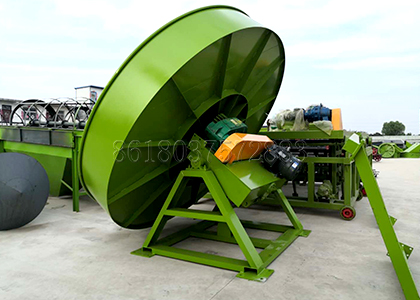According to the survey, the utilization rate of chemical fertilizers in my country is only 35%to 40%, and the rest are filtered by soil fixation or rainwater, causing environmental problems such as water pollution and richer lakes. Experts urgently call for reducing the use of chemical fertilizers, using more new biological fertilizers, and applying more organic fertilizers. The vast number of farmers also urgently need a new type of fertilizer to meet the needs of agricultural production.

Organic fertilizer NPK fertilizer production line mainly crushes the previously fermented organic fertilizer raw materials, then sieved, and then measures the raw materials and other compatible components of the adhesive. After further drying to produce powder organic fertilizers), the materials that are fully mixed are evenly delivered to the granulator to make granules through the belt conveyor.
Select the appropriate organic fertilizer granulator according to the requirements of specific process. There are many types of granulators, such as roller extruders, discullars, and drummers. For granularized granular machines with strict particle size control, it is recommended to use roller squeeze granulator; for granular makers with general requirements for particle size and output, organic fertilizer is recommended to turn drummers.
Basically, all granular drying process can be made with double -roller particles. In particular, the particle size of the raw material powder is less than 2mm, preferably less than 1mm, which is very suitable for squeezing granules. Suitable for minced stone, powder, crystal, granular and granular raw materials. For potassium chloride, the standard quality and by -products or products with lower costs are too thin and unable to mix, which is suitable for squeezing. Although granular urea can be used, it is more suitable for powder or crystalline urea with small granularity.
In some cases, the particle size of the raw materials is very large, and the larger particles should be broken first, so that the nutrient distribution in the product is more uniform.

